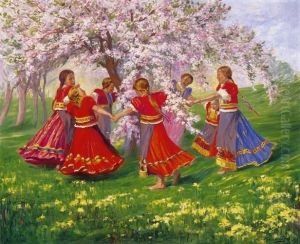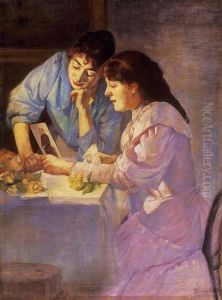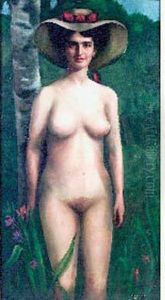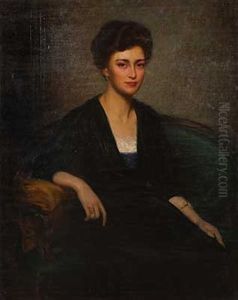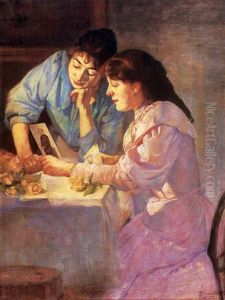Jozef Ferenczy Paintings
Jozef Ferenczy was a Slovak painter and printmaker, known for his contributions to Slovak modern art, particularly during the first half of the 20th century. Born on March 19, 1895, in Zbehy, Slovakia, which was then part of the Austro-Hungarian Empire, Ferenczy was exposed to an environment that was undergoing significant social and cultural changes, which later influenced his artistic direction.
Ferenczy's education in art began at the Hungarian Academy of Fine Arts in Budapest, where he honed his skills and developed his unique style. After World War I, Slovakia became part of the newly formed Czechoslovakia, and this political shift impacted the cultural landscape of the region. Ferenczy became an active participant in the burgeoning Slovak art scene, contributing to the development of a distinct Slovak modern art movement.
Throughout his career, Ferenczy exhibited a keen interest in exploring different techniques and styles. He was particularly known for his woodcuts and linocuts, through which he expressed his perspective on social themes, folklore, and rural life in Slovakia. His graphic works often carried a strong narrative element, depicting scenes from everyday life with a focus on the human condition.
During the interwar period, Ferenczy became a significant figure in Slovak art circles, engaging with various artists' groups and associations. He was involved with the Mánes Union of Fine Arts and contributed to numerous exhibitions, both domestically and internationally. His work was celebrated for its artistic integrity and its reflection of Slovak national identity.
Jozef Ferenczy's career was also marked by his role as an educator. He taught at the School of Arts and Crafts in Bratislava (now the Academy of Fine Arts and Design), where he influenced a new generation of Slovak artists. His pedagogical work and his dedication to the arts made him a respected figure among his peers and students.
Ferenczy's artistic legacy is preserved in the form of paintings, prints, and drawings that are held in various collections, including the Slovak National Gallery. His work continues to be studied and appreciated for its contribution to the cultural heritage of Slovakia.
Jozef Ferenczy passed away on October 4, 1977, in Bratislava, Slovakia. His life and work remain an integral part of Slovak art history, offering insights into the nation's cultural evolution during a period of significant change and asserting the value of regional art traditions within the broader context of European modernism.
